Different Types of Chameleons – Whether you’re an animal enthusiast or an inquisitive admirer of lizards, knowing how many types of chameleons there are can be surprising.
Not only does the chameleon’s diversity prompt astonishment, its amazing adaptive abilities seem nothing less than remarkable.
To get more acquainted with these unique creatures, let’s go over some important information about where they live, what they can do, and what they are called.
Chameleon Generalities
- Despite popular belief, not all chameleons can change their color.
- Color changes are more directly related to a chameleon’s mood and situation than to its need for camouflage.
- Like humans, chameleons can see in 3d, but have eyes that move independently of one another that rotate 360°.
- A chameleon’s tongue can grow to be longer than its own body.
- Depending on which species a chameleon is, it can produce offspring either by laying eggs underground or by having live birth of fully developed young ones.
- Chameleons can climb quickly due to their sharp clawed toes and foot structure.
- Most varieties of chameleon are carnivorous.
Different Types of Chameleons
As there are over 150 different varieties of chameleon, discussing them all is improbable. However, we can examine some of the more well known types and their particular points of interest.
1. Panther Chameleon
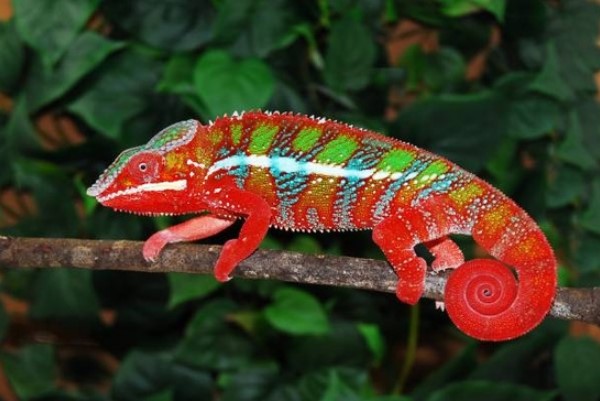
These beautiful and exotic creatures are fiercely protective and one of the few chameleon species who can change color.
Native to madagascar’s tropical climate, panther chameleons prefer seclusion and are particular about their environment, but may be managed with great care in captivity.
Color variations for panther chameleons are spectacular. Ranging from tan, red, orange, yellow, and blue; panthers are often a desirable among exotic animal collectors.
Related Post: Syrian “Teddy Bear” Hamster
2. Veiled Chameleons
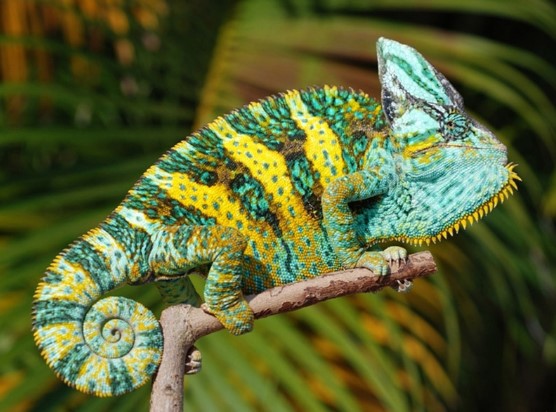
Also a very popular choice for collectors, veiled chameleons differ greatly from panther chameleons. Opting for much hotter and arid environments like those of arab nations, these green reptiles can grow up to 2 feet long and eat both plants and insects.
This species is most recognized for the contours of its head, which rises upwards from the crown forming a triangular shape.
3. Dwarf Chameleon
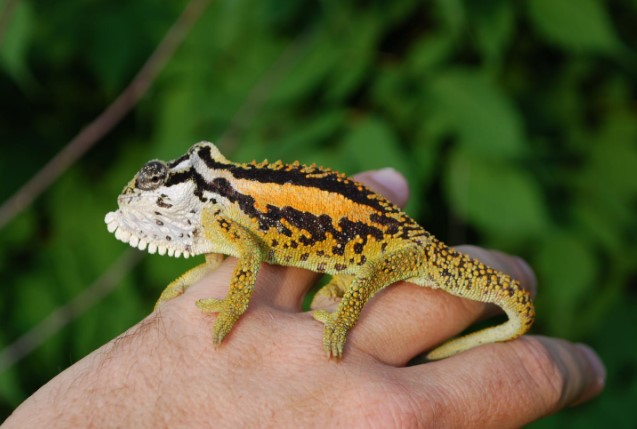
Possibly the world’s smallest chameleon, these tiny, flat-headed lizards are brownish grey in color and do not fare well in captivity.
Living wild in rain forest habitats of Madagascar, dwarf chameleons can be full grown at a little over 1 inch and usually only have two offspring in a clutch.
4. Parson’s Chameleon
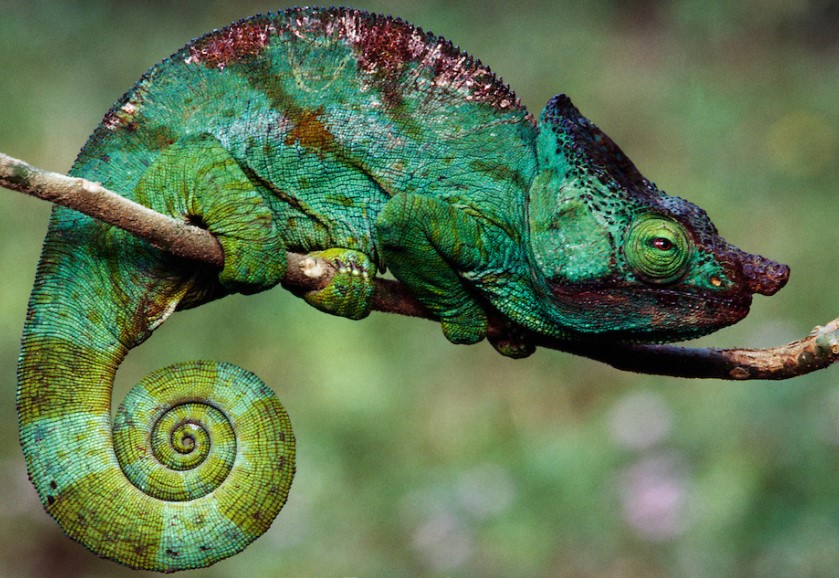
Second only to the malagasy giant chameleon in size, parson’s chameleons can grow in excess of 2 feet and come in mainly two colors; yellow and green.
Some color variation occurs depending on gender, so a parson’s may be red tinged brown or even turquoise. Some types of this kind of reptile may have distinctive orange colored eyes.
5. Jackson’s Chameleon
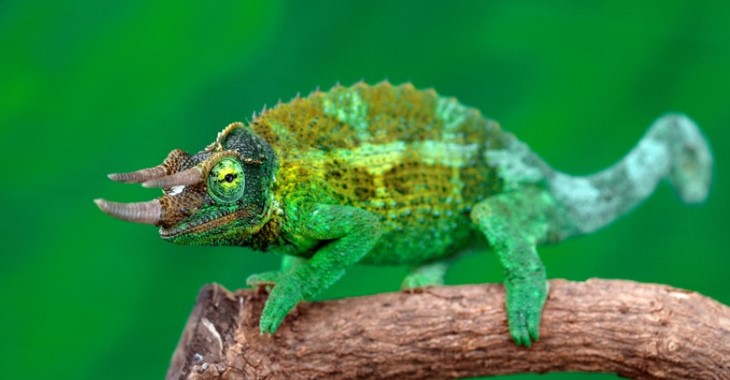
Considerably one of the more interesting chameleons, jackson’s chameleons are african natives and come mainly green in color.
While coloring for the jackson’s is rather boring, it is the male of the species that presents most attraction as it has three protruding horns on its head.
Jackson’s chameleons are also different from many other chameleons in the fact that it is one of the few that give live birth.
Owning a chameleon
While these amazing creatures are cool, owning one is a big responsibility. Oftentimes, chameleons are fussy breeds. Keeping them healthy and happy requires intensive care from an owner.
If you are serious about purchasing a chameleon, be sure to do your research beforehand so that you are aware of the many different environmental and nutritional needs your particular reptile will have.
Keyword: Types of Chameleons
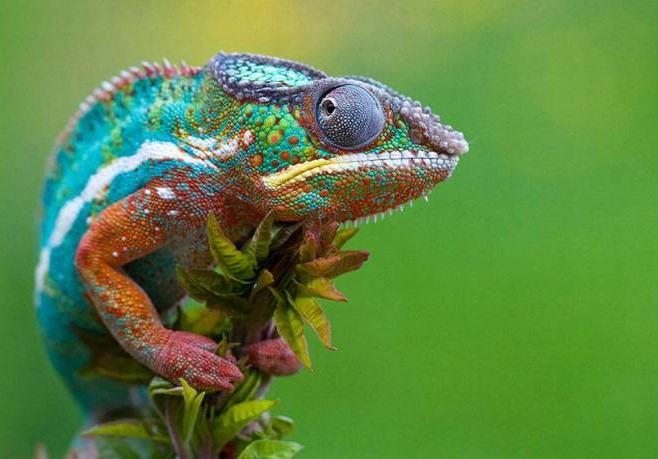
Hi,
First of all , i really enjoyed your article about different types of chameleons.
I stumbled upon this article when i was using pinterest searching for pictures for exotic lizards and reptiles.
I particularly liked how you included the Jackson’s chameleons as they are my absolute favorite.
I wrote an article on my website about how exactly do chameleons change colors, discussed in a biologically based way.
Please let me know if you want to check that !
Thanks.
TheBioManual